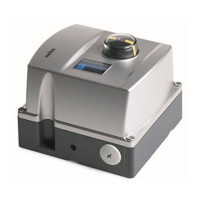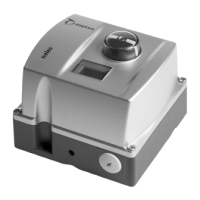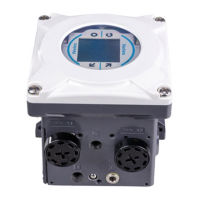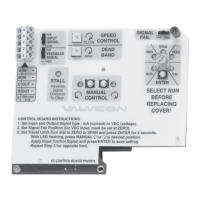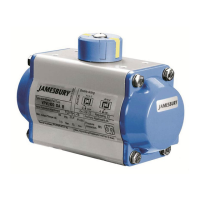6 6 BC 71 en
There are two adjustable stop screws in the actuator; these
stop the movement of the secondary shaft in the extreme
positions. The actuator generates a torque of approxi-
mately 1.3 times the nominal torque when the piston is at
the upper end of the cylinder, see also Fig. 3. For some
valves, e.g. butterfly valve, the closing torque and position
is accurate. The stop screw at the cylinder end has to be
adjusted according to right instructions, see separate valve
specific instructions for more detailed information. An O-
ring (33A) is used for sealing the stop screw in the cylinder
end. See also the instructions of the valve.
3.3 Demounting the actuator from the
valve
The actuator must be depressurized and the supply air
pipes disconnected. Unscrew the actuator-side screws of
the bracket and pull the actuator off the valve shaft. This is
best done using a specific extractor, see Fig. 7 and Section
6. Note the mutual positioning of the valve and the actua-
tor to ensure correct functioning after reassembly.
4 MAINTENANCE
4.1 Maintenance general
Although Metso’s Neles actuators are designed to work
under severe conditions, proper preventative maintenance
can significantly help to prevent unplanned downtime and
in real terms reduce the total cost of ownership. Metso rec-
ommends inspecting the actuators at least every five (5)
years.
The inspection and maintenance interval depends on the
actual application and process condition. The inspection
and maintenance intervals can be specified together with
your local Metso experts.
During this periodic inspection the parts detailed in the
Spare Part Set should be replaced. Time in storage should
be included in the inspection interval.
Maintenance can be performed as presented below. If
maintenance assistance is required, please contact your
local Metso office.
The part numbers in the text refer to the exploded view and
to the parts list in Section 8, unless otherwise stated.
Under severely corrosive conditions, the linkage system
inside the housing should be lubricated at six month inter-
vals. Use Cortec VCI 369 anti-corrosive agent or the equiva-
lent. The housing may also be half filled with semi-fluid
water-repellant grease (e.g. Mobilux EP2) while the piston
rod is in the lower position.
If you remove the stop screw, adjust the limits after
lubrication or grease filling!
4.2 Replacement of piston seals
Replacement of all seals and soft bearings is recommended
when the actuator has been disassembled for maintenance.
Operate the actuator so that the piston goes to the
outermost end of the cylinder. Release the pressure
from the cylinder.
Remove the cover of the housing (2).
Fig. 6 The stop screws in the open and closed positions
CAUTION:
Take the weight of the actuator or valve combination
into account when handling it!
CAUTION:
Beware of the cutting movement of the valve!
Fig. 7 Removing the actuator with the extractor
stop screw for
closed position
stop screw for
open position
CAUTION:
Observe the safety precautions mentioned in Section
1.6 before maintenance!
NOTE:
In order to ensure safe and effective operation, always use
original spare parts to make sure that the actuator func-
tions as intended.
NOTE:
When sending goods to the manufacturer for repair, do
not disassemble them.
NOTE:
For safety reasons, replace bolting if the threads are dam-
aged, have been heated, stretched or corroded.
CAUTION:
Don’t dismantle a pressurized actuator!
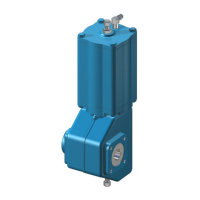
